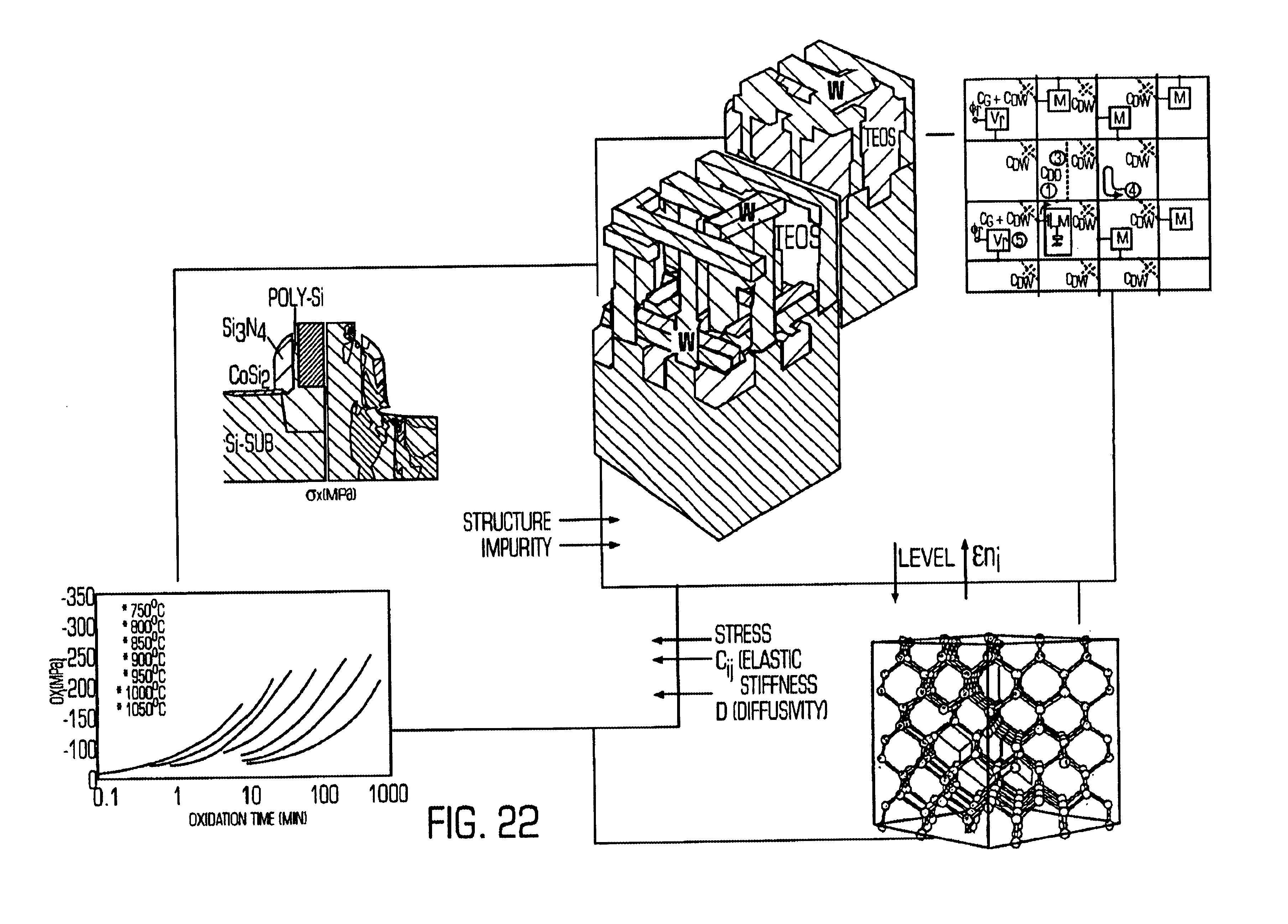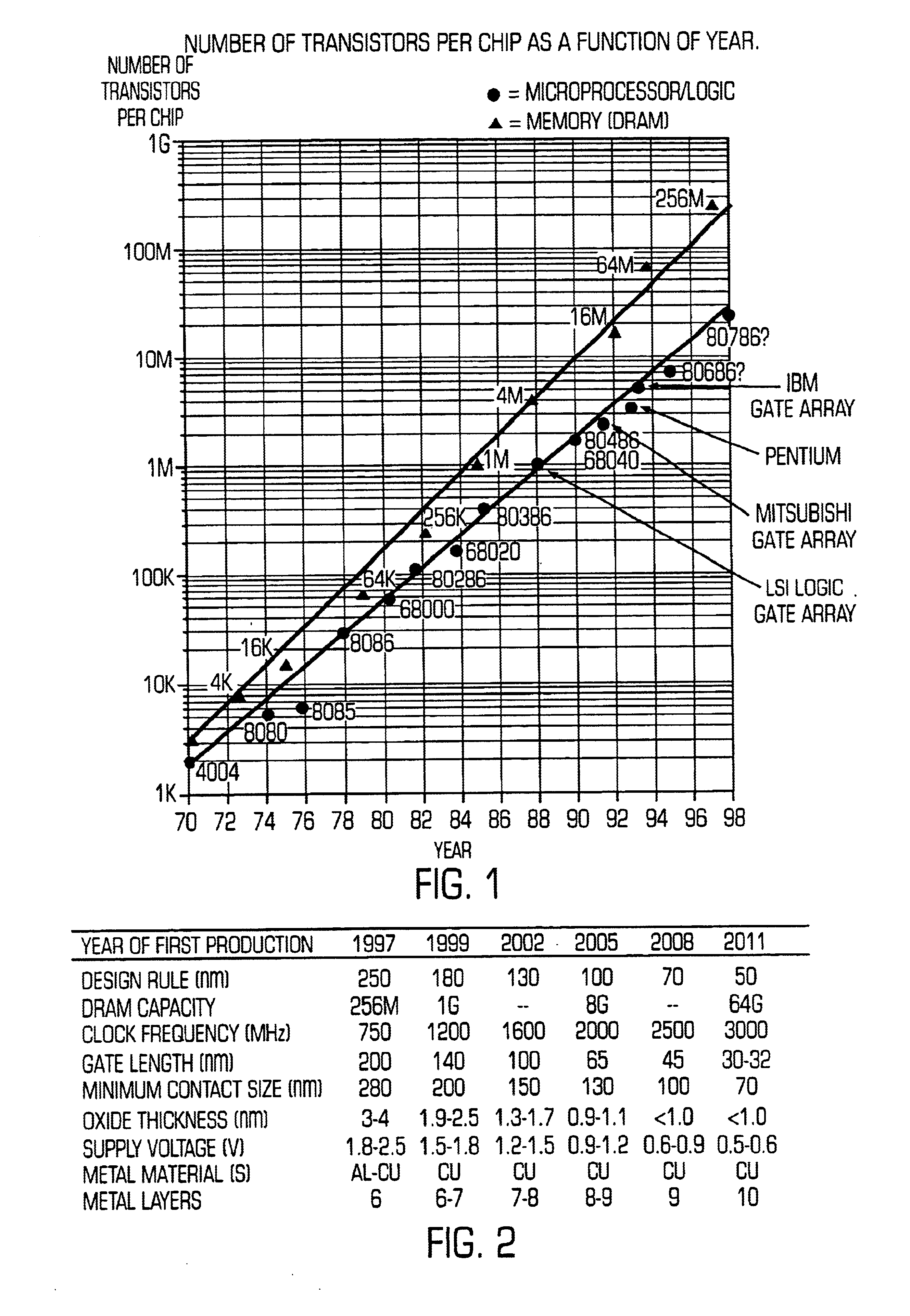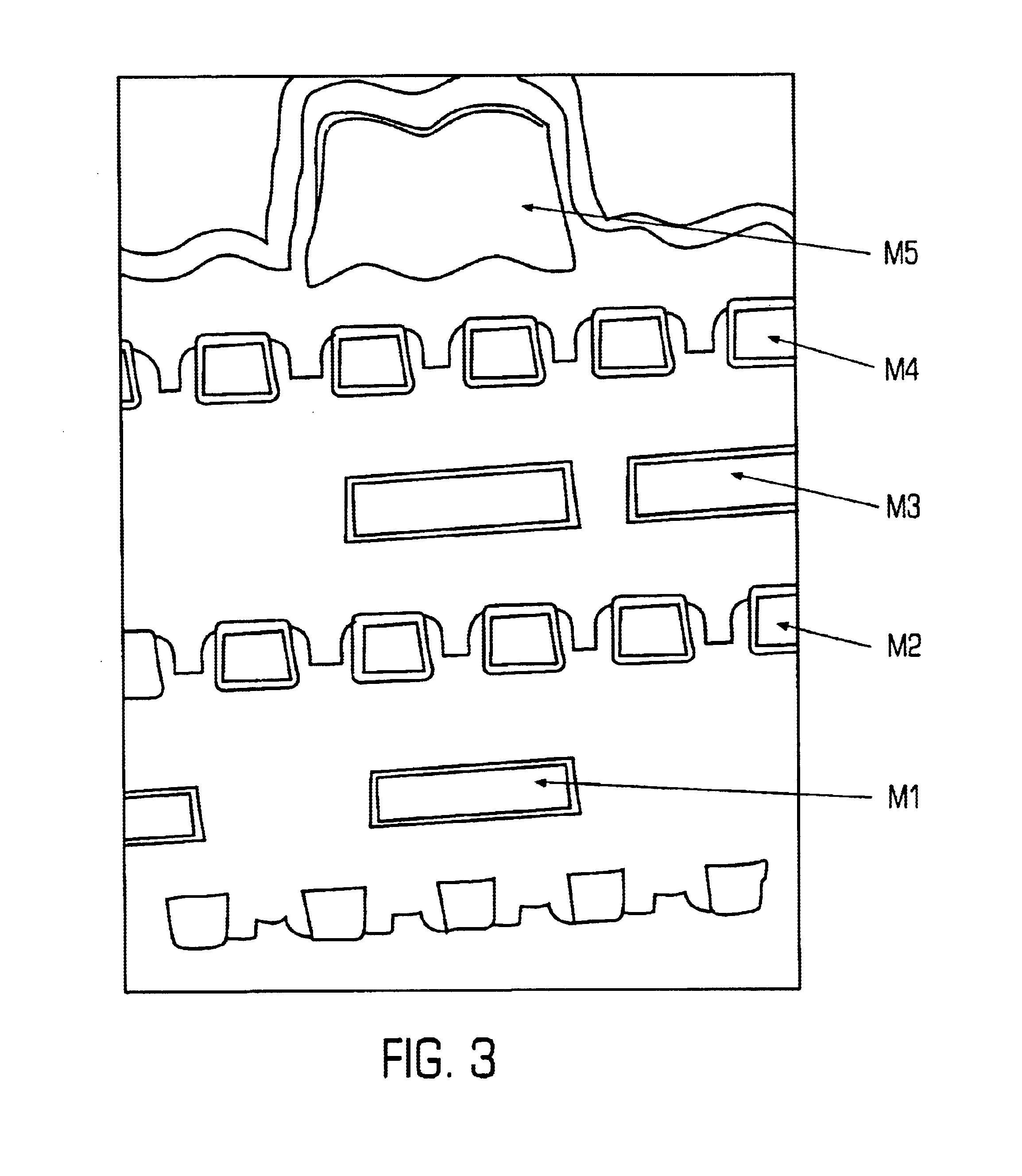Method and apparatus for simulating manufacturing, electrical and physical characteristics of a semiconductor device
a semiconductor device and simulation method technology, applied in the direction of instruments, analogue processes for specific applications, electric/magnetic computing, etc., can solve the problems of tighter design criteria, increased complexity of equipment used in semiconductor processing, and strong increase of the number of metal layers
- Summary
- Abstract
- Description
- Claims
- Application Information
AI Technical Summary
Benefits of technology
Problems solved by technology
Method used
Image
Examples
Embodiment Construction
FIG. 21 shows a conceptual system overview of a simulator according to one embodiment of the present invention. The simulator system according to the present invention comprises a three-dimensional lumped device element simulation part, a three-dimensional visco-elastic process simulation part, and a material design part.
The three-dimensional lumped device element simulation part is interlinked with both the three-dimensional process simulation part and the material design part as shown in FIG. 21. The three dimensional process simulation part also is interlinked with the material design part.
The three-dimensional visco-elastic process simulation part comprises a visco-elastic model for silicon silicide, and SiO2, a non-equilibrium point-defect diffusion model, and an anisotropic Young modulus model. The three-dimensional visco-elastic process simulator can execute a metal deposition process, a metal etching process, a silicon substrate oxidation, a poly-silicon film oxidation, an i...
PUM
 Login to View More
Login to View More Abstract
Description
Claims
Application Information
 Login to View More
Login to View More - R&D
- Intellectual Property
- Life Sciences
- Materials
- Tech Scout
- Unparalleled Data Quality
- Higher Quality Content
- 60% Fewer Hallucinations
Browse by: Latest US Patents, China's latest patents, Technical Efficacy Thesaurus, Application Domain, Technology Topic, Popular Technical Reports.
© 2025 PatSnap. All rights reserved.Legal|Privacy policy|Modern Slavery Act Transparency Statement|Sitemap|About US| Contact US: help@patsnap.com



